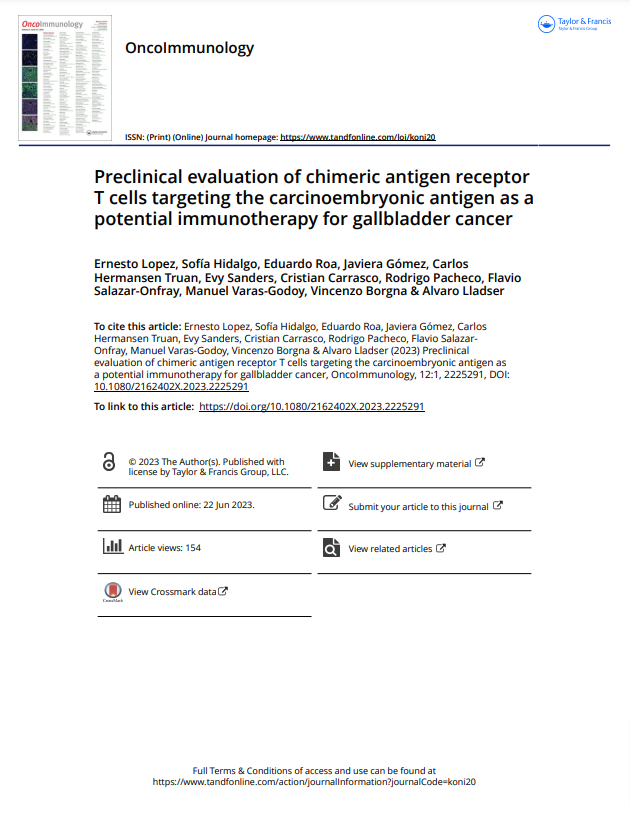
Preclinical evaluation of chimeric antigen receptor T cells targeting the carcinoembryonic antigen as a potential immunotherapy for gallbladder cancer OncoImmunology
DOI: 10.1080/2162402X.2023.
Volume 12 – Issue 1, 2225291, 2023

Pathologically phosphorylated tau at S396/404 (PHF‐1) is accumulated inside of hippocampal synaptic mitochondria of aged Wild‐type mice (Cheril Tapia)
PDF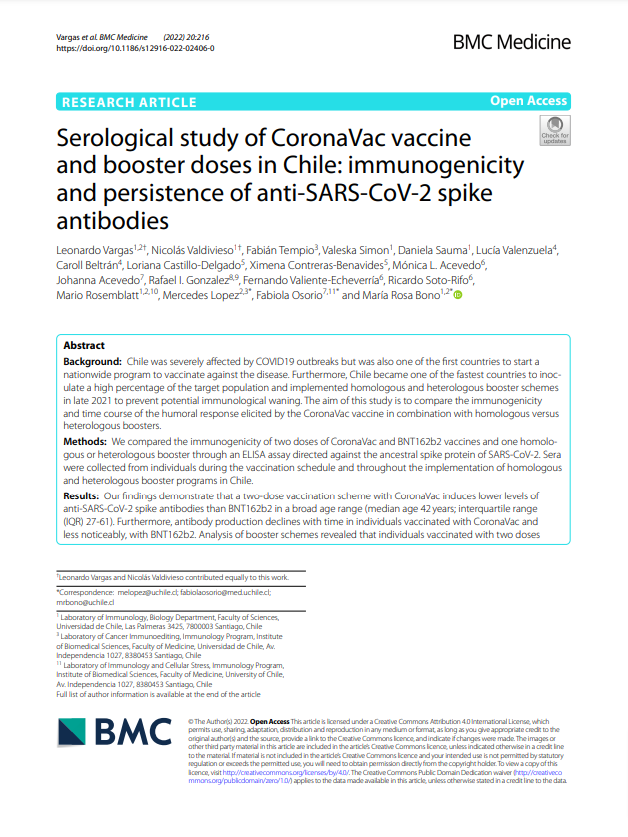
Serological study of CoronaVac vaccine and booster doses in Chile: immunogenicity and persistence of anti-SARS-CoV-2 spike antibodies
PDF
Cell Differentiation and Pathology (Enrique Brandan)
PDF
Computational Biology (Tomás Pérez-Acle, PhD)
PDF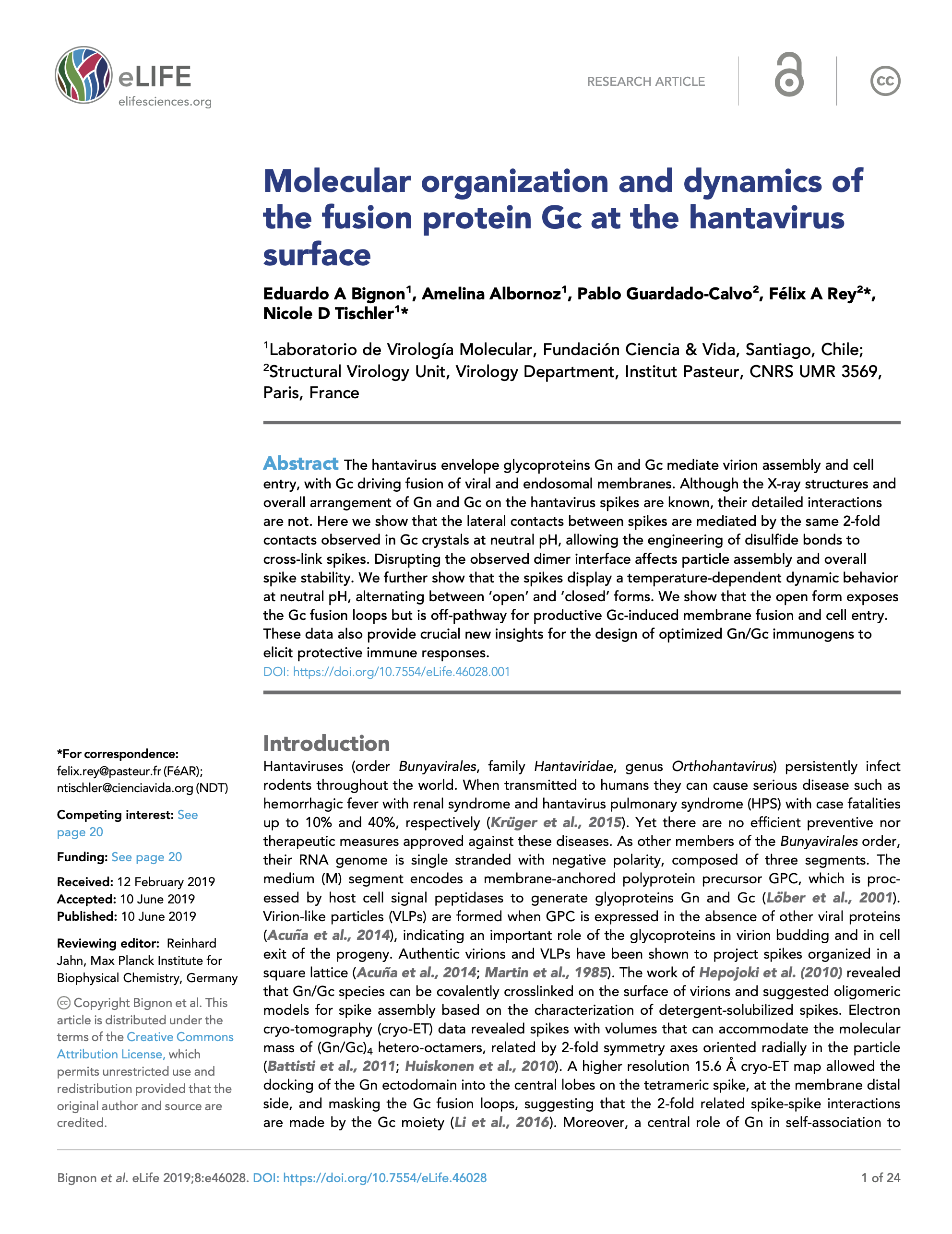
Molecular Virology (Nicole Tischler, PhD)
Bignon EA, Albornoz A, Guardado-Calvo P, Rey FA, Tischler ND (2019). Molecular organization and dynamics of the fusion protein Gc at the hantavirus surface. eLife 8. pii: e46028. doi: 10.7554/eLife.46028.

Cellular and Molecular Immunology (Mario Rosemblatt, PhD)
Y. Hidalgo, S. Núñez, M.J. Fuenzalida, F. Flores-Santibáñez, P.J. Sáez, J. Dorner, A.M. Lennon-Dumenil, V. Martínez, E. Zorn, M. Rosemblatt, D. Sauma and M.R. Bono. Thymic B cells promote germinal center-like structures and the expansion of follicular helper T cells in lupus-prone mice. Frontiers Immunology, Vol. 11, Article 696, April 2020. doi: 10.3389/fimmu.2020.00696
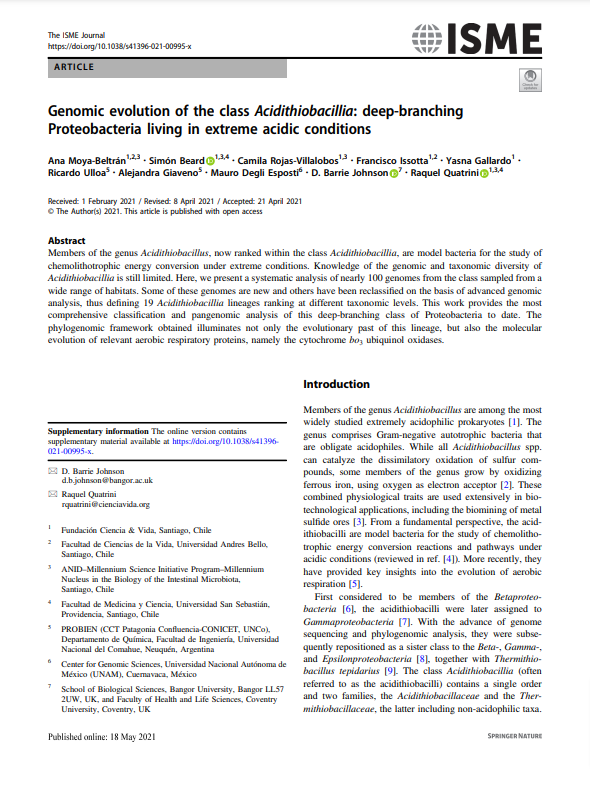
Microbial Ecophysiology (Raquel Quatrini, PhD)
Moya-Beltrán A., Rojas-Villalobos C., Díaz M., Guiliani N., Quatrini R., Castro M. Nucleotide second messenger-based signaling in extreme acidophiles of the Acidithiobacillus species complex: partition between the core and variable gene complements. Front. Microbiol. 10: 381. DOI:10.3389/fmicb.2019.00381 (2019)
In this publication we address the challenge of disentangling the nucleotide-driven signal transduction pathways in the acidophilic bacterial genus Acidithiobacillus, using pangenome-based comparative genomic strategies. Molecular elements of c-di-GMP metabolism and transduction were mostly found scattered along the flexible genome of the acidithiobacilli, allowing the identification of probable control modules that could be critical for substrate colonization, biofilm development and intercellular interactions. Findings presented open new ways to explore molecular circuits to control biomining microorganism behaviours.
PDF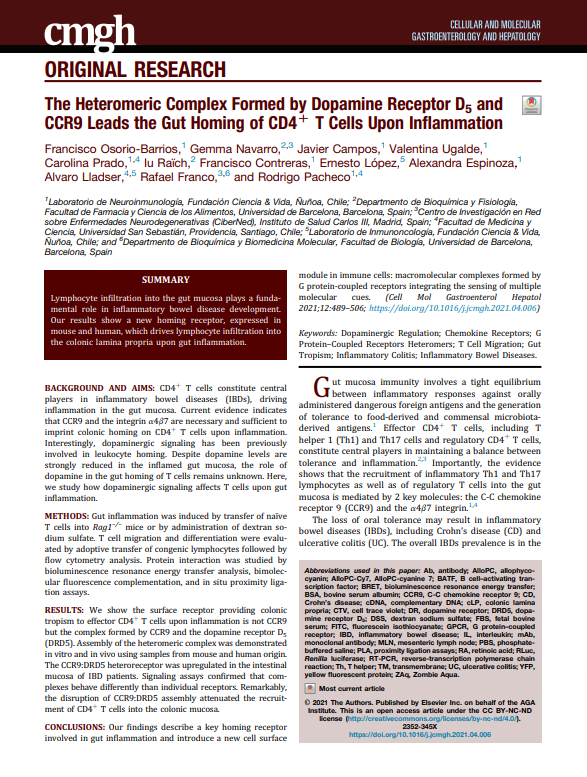
Neuroimmunology (Rodrigo Pacheco, PhD)
Ugalde V., Contreras F., Prado C., Chovar O., Espinoza A., Pacheco R. Dopaminergic signalling limits suppressive activity and gut homing of regulatory T cells upon intestinal inflammation. Mucosal Immunol. In press. doi: 10.1038/s41385-020-00354-7 (2020).
Here we provide genetic and pharmacologic evidence indicating how dopaminergic signalling impairs the suppressive activity and the recruitment of Treg into the gut mucosa upon intestinal inflammation.
PDF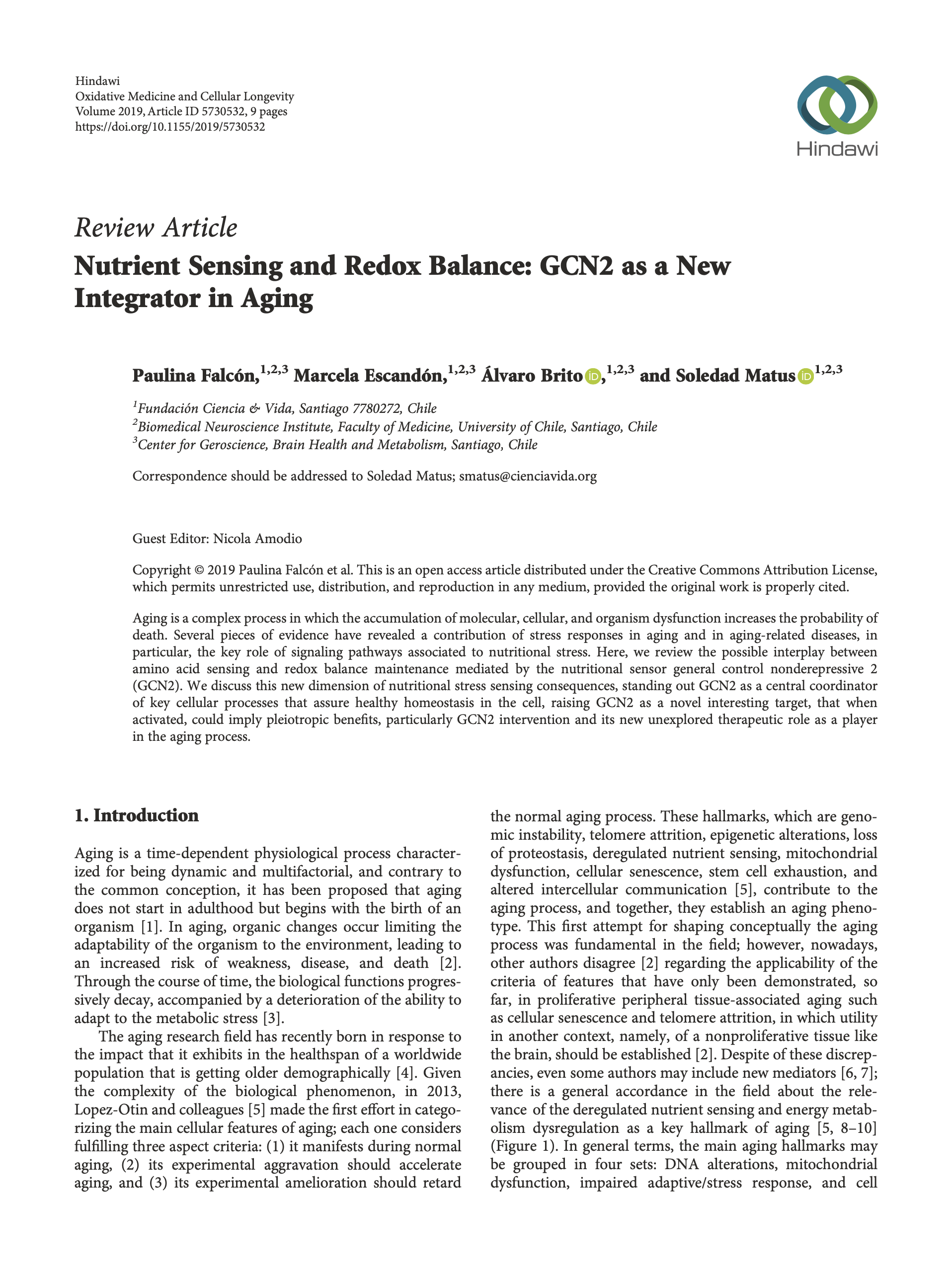
Biology of Neurodegeneration (María Soledad Matus Montero, PhD)
Falcón P, Escandón M, Brito Á, Matus S. Nutrient Sensing and Redox Balance: GCN2 as a New Integrator in Aging. Oxid Med Cell Longev. 2019 May 22;2019:5730532. doi: 10.1155/2019/5730532.
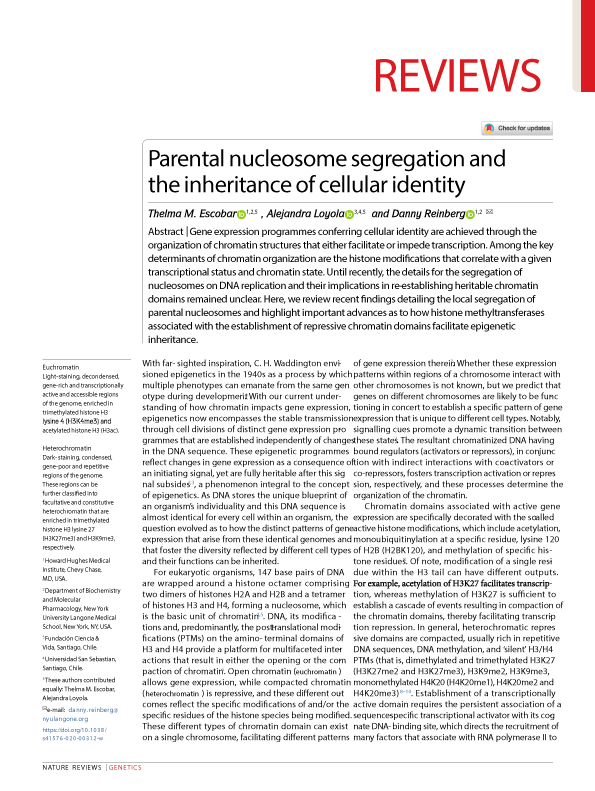
Epigenetics and Chromatin (Alejandra Loyola, PhD)
*Escobar T., *Loyola A. and Reinberg D. “Parental nucleosome segregation and the inheritance of cellular identity”. (2021) Nature Reviews Genetics. https://doi.org/10.1038/s41576-020-00312-w. *equal contribution
The article is a review of recent findings detailing local segregation of parental nucleosomes during DNA replication.
PDF
Immunoncology (Álvaro Lladser, PhD)
Menares E, Gálvez-Cancino F, Cáceres-Morgado P, Ghorani E, López E, Díaz X, Saavedra-Almarza J, Figueroa DA, Roa E, Quezada SA, Lladser A. Resident memory CD8+ T cells amplify anti-tumor immunity by triggering antigen spreading through dendritic cells. Nature Communications. 10(1):4401. doi: 10.1038/s41467-019-12319-x (2019).
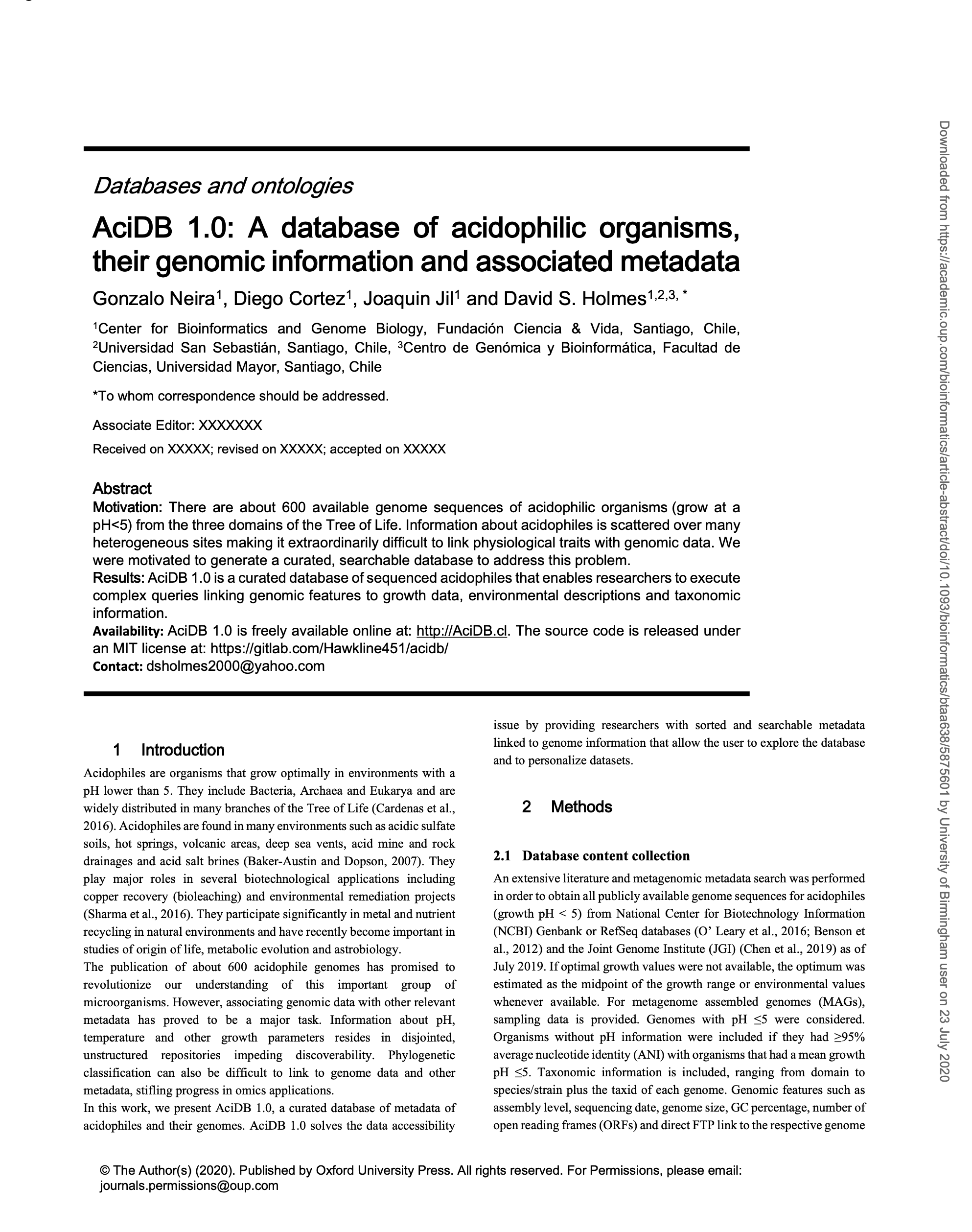
Bioinformatics and Genome Biology (David S. Holmes, PhD)
Neira, G., Cortez, D., Jil, J., Holmes, D. S. AciDB 1.0: A database of acidophilic organisms, their genomic information and associated metadata. Bioinformatics (Oxford, England) DOI: 10.1093/bioinformatics/btaa638 (2020).
A searchable database has been constructed of over 500 high-quality genomes of acidophilic Bacteria and Archaea.
PDF
Non-coding RNAs & Cancer (Luis O. Burzio, PhD)
Borgna, V., Lobos-González, L., Guevara, F., Landerer, E., Bendek, M., Ávila, R., Silva, V., Villota, C., Araya, M., Rivas, A., López, C., Socias, T., Castillo, J., Alarcón, L., Burzio, L. O., Burzio, V. A., & Villegas, J. (2020). Targeting antisense mitochondrial noncoding RNAs induces bladder cancer cell death and inhibition of tumor growth through reduction of survival and invasion factors. Journal of Cancer, 11(7), 1780–1791. https://doi.org/10.7150/jca.38880
In vivo knockdown of ASncmtRNA induces apoptosis and tumor growth inhibition in xenograft and PDX murine models of bladder cancer.
PDF
